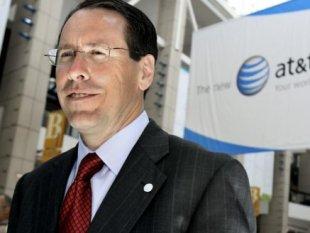In poll after poll, the American people say they are far more concerned about the jobs crisis than the “debt crisis.” A powerful coalition of CEOs says they have an answer for both problems.
Give us more tax breaks, they say, and we’ll use the money to invest and create jobs. The national economic pie will expand and Uncle Sam will get plenty of the frothy meringue without having to raise tax rates.
That’s the line of the Fix the Debt campaign. Led by more than 90 CEOs, this turbo-charged PR/lobbying machine is blasting the message that such “pro-growth tax reform” should be a pillar of any deficit deal (along with cuts to benefit programs like Social Security and Medicare).
And it might be a good line — if not for some pesky real-world facts. You see the same corporations peddling this line have already been paying next to nothing in taxes. And instead of creating jobs, they’ve been destroying them. Here are five examples of job-cutting, tax-dodging CEOs who are leading Fix the Debt.
1. Randall Stephenson, AT&T
U.S. jobs destroyed since 2007: 54,000
Average effective federal corporate income tax rate, 2009-2011: 6.3%

AT&T CEO Randall Stephenson is part of the problem, not part of the solution. Photo by Alternet.
Can Stephenson blame all this belt-tightening on the Tax Man? Not exactly. Over the last three years, AT&T’s tax bills have been miniscule. According to the firm’s own financial reports, they’ve paid Uncle Sam only 6.3 percent on more than $43 billion in profits. If the telecom giant had paid the standard 35 percent corporate tax rate over the last three years, the federal deficit would be $12.5 billion lower.
So where have AT&T’s profits gone? A huge chunk has landed in Stephenson’s own pension fund. His $47 million AT&T retirement account is the third-largest among Fix the Debt CEOs. If converted to an annuity when he hits age 65, it would net him a retirement check of more than a quarter million dollars every month for the rest of his life.
While his economic future is more than secure, Stephenson emerged from a meeting with President Obama on November 28 “optimistic” about the chances of reforming (i.e., cutting) Social Security as part of a deal to avoid the so-called “fiscal cliff.”
2. Lowell McAdam, Verizon
U.S. jobs destroyed since 2007: 30,000
Average effective federal corporate income tax rate, 2009-2011: -3.3%
Another telecommunications giant, Verizon, is close behind AT&T in the layoff leader race, with 30,000 job cuts since 2007. Like its industry peer AT&T, Verizon also has a big deficit in its pension accounts. It would need to cough up $6 billion to meet its promised pension benefits to employees and another $24 billion to meet promised post-retirement health care benefits.
Did the blood-sucking IRS leave Verizon no choice but to slash jobs and underfund worker pensions? Far from it. The company actually got money back from Uncle Sam, despite reporting $34 billion in U.S. profits over the last three years. If Verizon had paid the full corporate tax rate of 35 percent, last year’s national deficit would have been $13.1 billion less. Had that amount been used for public education, it could have covered the cost of employing more than 190,000 elementary teachers for a year.
Verizon’s new CEO, Lowell McAdam, already has $8.7 million in Verizon pension assets, enough to set him up for a $47,834 monthly retirement check. McAdam’s predecessor, Ivan Seidenberg, who has also signed up as a Fix the Debt supporter, retired with more than $70 million in his Verizon retirement package.
Wanna see who is rounding up the worst five? Read the rest at Alternet.